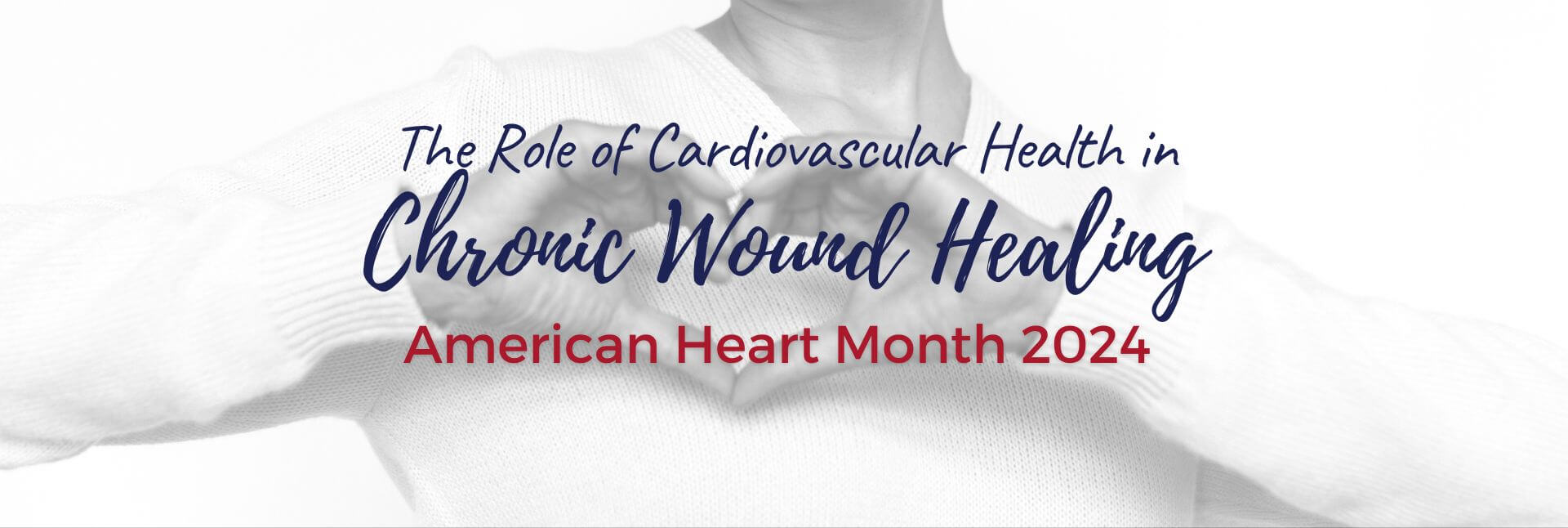The Role of Cardiovascular Health in Chronic Wound Healing

Cardiovascular health can be the key to improved health and wellness, but what about its role in chronic wound healing?
At CūtisCare, our team of physicians, allied healthcare professionals, administrators, and business professionals is laser-focused on the treatment of chronic, non-healing wounds. Our stated mission is to empower healthcare organizations of all scopes and sizes with the solutions they need to treat patients with chronic wounds of various etiologies, including cardiovascular disease.
In this blog post, commemorating American Heart Month, we explore the significant impact of Hyperbaric Oxygen Therapy (HBOT) as a transformative option for wound treatment. Centering around healing within the framework of an interdisciplinary approach, with a particular focus on the patient's cardiovascular health.
But what exactly does effective wound healing entail?
And how does cardiovascular health affect the process?
We found an excellent comprehensive explanation of “wound healing 101” at the University of Rochester Medical Center:
Blood-borne oxygen is needed for healing. The right balance of oxygen is also important — too much or too little and the wound won't heal correctly. Another type of blood cell, a white blood cell called a macrophage, takes on the role of wound protector. This cell fights infection and oversees the repair process. You might see some clear fluid on or around the wound at this time. That is helping clean out the wound. Macrophages also make chemical messengers, called growth factors, which help repair the wound.
The medical professionals at URMC highlight the basic mechanisms of wound healing as optimal blood flow, oxygen, and growth factors, to name a few.
The downside to poor cardiovascular health in wound healing is reduced blood flow and oxygen to the chronic wound region and an inhibited overall healing process.
Some of the manifestations of comorbid cardiovascular health issues in patients with chronic wounds include:
- Coronary Artery Disease (CAD)
- Peripheral Arterial Disease (PAD)
- Peripheral Arterial Occlusive Disease (PAOD)
- Atherosclerosis
In the most extreme cases, non-healing wounds can lead to amputation, especially lower extremity amputations. It’s important to note that at CūtisCare, our goal is always to provide doctors and care teams with wound-healing solutions to prevent the more than 150,000 lower extremity amputations that occur in the U.S. each year.
Regardless of the severity of the wound, though, the patient’s quality of life will be significantly adversely affected by a non-healing wound. Some of these effects include reduced mobility, severe discomfort, increased pain, increased risk of infection, and anxiety.
The good news is there are effective, non-invasive treatment options for chronic wounds caused or exacerbated by poor cardiovascular health.
Those options include Hyperbaric Oxygen therapy, or HBOT.
HBOT can provide an effective, CMS-approved treatment option for patients who might not be candidates for a vascular intervention or surgery by treating, and in some cases reversing, the three H’s of chronic, non-healing wounds:
- Hypoxia
- Hypovascularity
- Hypocellularity
The net positive effects of HBOT can include increased blood flow to damaged tissue, increased oxygen dissolved in tissue, increased production of growth factors, angiogenesis, reduced danger of infections, and more.
It’s American Heart Month, and there’s good news for care teams with patients struggling with chronic, non-healing wounds exacerbated by poor cardiovascular health.
Would you like to hear more about the capabilities of HBOT as a treatment for chronic wounds?
Or maybe you just have some questions.
Either way, we’d love to share our 25 years of knowledge and experience with you. Get in touch with one of our HBOT thought leaders today.
